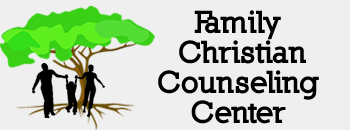Learning and Trauma
Helping Traumatized Children Learn
I just finished reading a chapter of the book titled “Helping Traumatized Children Learn”. This report was a collaboration with Harvard Law School and The Task Force on Children Affected by Domestic Violence. The basics of the book are:
• Chapter 1 – The impact of trauma on learning
• Chapter 2 – Making school environments trauma sensitive
• Chapter 3 – Policy Recommendations
In the Executive Summary it states: “This report proposes an educational and policy agenda that will enable schools to become supportive environments in which traumatized children can focus, behave appropriately, and learn. It translates complex research on trauma into educational terms that are useful to teachers and schools. And it provides a Flexible Framework—which can be adapted by any school—for creating a climate in which children exposed to family violence can achieve at their highest levels.”
Why Trauma is so detrimental to learning
Chapter one explains why trauma is so detrimental to a child’s ability to learn. Children with secure attachments and a positive worldview usually are able to regulate their emotions and develop the solid foundation necessary for adapting well at school. For other children, however, trauma at home can create negative expectations and assumptions. Many of these children have a diminished sense of self-worth and feel incapable of having a positive impact on the outside world. Hopelessness, and lack of control are typical of the feelings that can result from trauma; these feelings may lead to despair and a loss of the ability to imagine the future or hope that circumstances will change. Children in this condition are often not prepared for the academic and social challenges of the classroom.
Learning and Survival Mode
The risk for children who live in trauma and who routinely operate in survival mode is that this mode can permeate every aspect of their lives. According to brain researchers, when children encounter a perceived threat to their safety, their brains trigger a complex set of chemical and neurological events known as the “stress response.” The stress response activates a natural instinct to fight, freeze, or flee from the unsafe event. Under normal circumstances these responses to stress are constructive and help keep a child safe.
However, when a child operates constantly in states of stress or fear, survival responses that may be fully appropriate in danger-laden situations can become all they know. Even when the dangers are not present, children may react to the world as if they are present. Unable to regulate heightened levels of arousal and emotional responses, they simply cannot turn off the survival strategies that their brains have been conditioned to employ. The report goes on to describe how Bruce Perry and the Child Trauma Academy explain what happens to the brain.
If you would like to read the entire report “Helping Traumatized Children Learn” please click on the link. Also if you would like to read how Family Christian Counseling Center uses Dr. Perry’s trauma model click on the link. Thanks for reading our blog.
